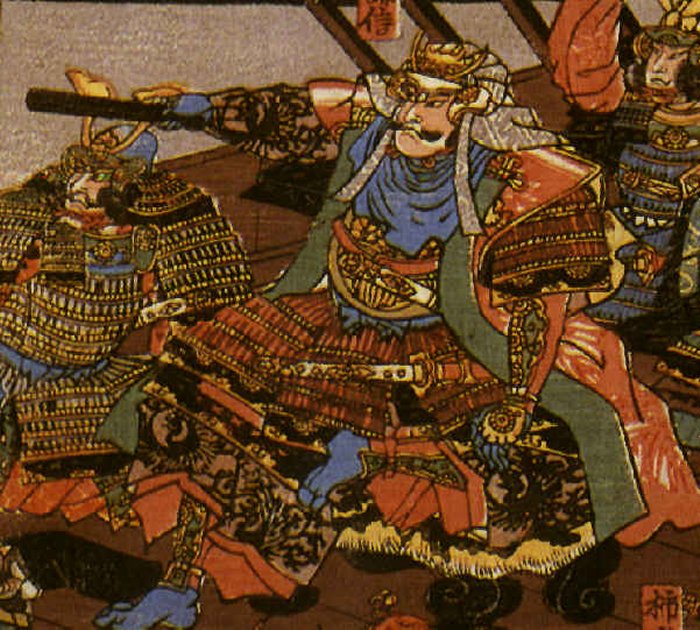Warrior Uesugi Kenshin And His Nagamaki Special Guards
Rafael - AncientPages.com - The name Uesugi Kenshin is well-known in the history of Japanese warriors. He was a daimyo born under the name, Nagao Kagetora. After he was adopted into the clan of the Uesugi, he ruled Echigo Province during Japan’s Sengoku period.
Illustration of Uesugi Kenshin, artist unknown. Credit: Public Domain
Kenshin was among the strongest daimyos during the Sengoku period. He was primarily remembered for his prowess and excellence on the battlefield. However, he was also regarded as a highly skilled administrator who supported the development of trade and local industries.
Due to how he ruled, there was a significant increase in the standard of living in Echigo.
Bishamonten - The God Of War
Aside from his governing skills, Kenshin was also famed for his military expertise, honorable conduct, and his long-standing competition with Takeda Shingen. He was also known for his campaigns to build the order in the Kanto region, as well as his belief in Bishamonten, the Buddhist God of War. Interestingly, a large number of Kenshin’s followers, as well as other people, believed that he was the embodiment of Bishamonten. Because of that, he was called the God of War.
Part of Kenshin fame came from a highly competitive and efficient civil administration. He was able to boost Echigo’s economic power. He pursued numerous initiatives that have encourage trade. Including the following: supporting the hemp trade in Echigo, revitalizing Kashiwazaki’s seaport, and building the Kasugayama Castle.
Oda Nobunaga. Credit: Katanas For Sale
Like a lot of coequals, Kenshin provided special inducements to merchants like tax incentives. This was to entice these individuals to continue doing business in Echigo.
During the time of civil war, the military record of Kenshin was indeed notable. He was able to engage some of the most capable and prominent generals of that time like Oda Nobunaga and Takeda Shingen. His constant rivalry with Takeda Shingen of Kai resulted in a legendary series of battles between two evenly-matched opponents.
At some point, Uesugi Kenshin was able to win against the larger forces of Oda Nobunaga and stall his goals of taking over Japan.
Conflicts and Takeda Shingen
Kenshin and Shingen had a legendary rivalry. Their first conflict stemmed from the two of them being too cautious and only committed themselves to engaging in indecisive battles. Throughout the years, there were a total of five engagements at Kawanakajima; however, the fourth battle between the two was the only skirmish that could be considered serious.
See also:
Ancient History Of The Samurai Armor
Secrets Of Ninja Swords – Favorite Weapon Of The Shinobi
Samurai Swords: Katana And Wakizashi And Their Long Tradition
In the year 1561, the two engaged in their biggest and most serious battle, the Battle of Kawanakajima. During the battle, Kenshin made use of a clever tactic: he utilized a special battle formation where soldiers at the front switched with the soldiers in the rear. This was to take the place of injured or tired soldiers on the front lines. The tactic allowed soldiers to take breaks while those who hadn't seen action can fight the front lines.
It was a highly effective strategy since Kenshin almost defeated Shingen.
Nobunaga’s Conflict
By the year 1570, Kenshin ruled over Echigo, a couple of other adjacent provinces, and the Hokuriku seaboard. He was also able to route the Oda forces in the Echizen province. In 1571, Kenshin assaulted Shingen’s Ishikura Castle in Kozuke province. They once again faced in the Battle of Tonegawa but disengaged again.
At the beginning of 1576, Kenshin started focusing on the issue of Oda Nobunaga - the warrior who had grown to become one of the most powerful warlords of Japan. With Hojo Ujiyasu and Takeda Shingen dead, the God of War no longer had issues to expand his realm.
Despite the overwhelming numbers of the Oda, Kenshin was able to emerge victorious on the field. At first, he refused to engage with Nobunaga army, until the opponent’s foot soldiers were neutralized by the heavy rains. Oda’s soldiers were forced to retreat to join the main forces, so Kenshin took advantage of one of the tactics utilized by his old rival, Shingen.
Kenshin allegedly sent a smaller unit to attack the opponent’s main forces from behind. It appeared that he gave Nobunaga the chance to crush his remaining forces. So, Oda took the bait and attacked Kenshin’s forces at night. He expected weak opponents at the frontlines but instead, faced the full military might of Kenshin forces.
The Special Retainers / Guards of Uesugi Kenshin
Aside from his skills as a warrior and a general, Uesugi Kenshin was also known for having a group of special guards that were all armed with the nagamaki. The nagamaki is a classic nihonto that features an extremely long handle. It was a long blade that usually measured around two feet or more. The sword's handle usually equaled the length of the blade or was close to it.
High Carbon Steel Heat Tempered Nagamaki With Strandard Fitting. Credit: Katanas For Sale
Some of the most famous generals who were part of this special group included Naoe Kanetsugu and Kakizaki Kageie. Kakizaki was one of Kenshin’s generals and was considered a very ferocious swordsman. He was one of the warriors who fought in three of the Kawanakajima battles. Kakizaki also led Kenshin’s vanguard force during the fourth battle.
As for Naoe Kanetsugu, he was one of the chief retainers of Kenshin who served as a top adviser. He was considered as the best logistical tactician of that time and led most of Kenshin’s success during his career.
The Nagamaki - Blades of Uesugi’s Guards
The Nagamaki is a classic Japanese sword that was utilized by Uesugi Kenshin’s retainers. The oldest sample of this sword dates back to the Kamakura period; and during the Muromachi period, the weapon was mainly utilized for battle.
The nagamaki sword remained a well-renowned piece even in popular culture. This was due to Uesugi Kenshin, who led a special group of retainers that were all armed with the nagamaki.
This specific weapon was mainly utilized by the warriors of Feudal Japan. It was a piece that required the user to wield it with both hands. The nagamaki sword was a weapon suitable against opponents on horseback. Generally speaking, The nagamaki was an infantry blade, it was primarily used against cavalry.
Written by – Rafael - AncientPages.com Contributor
Copyright © AncientPages.com All rights reserved. This material may not be published, broadcast, rewritten or redistributed in whole or part without the express written permission of AncientPages.com
More From Ancient Pages
-
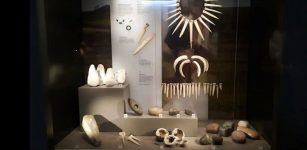 Ancient Goldsmith’s Toolkit Discovered Near Stonehenge
Archaeology | Dec 16, 2022
Ancient Goldsmith’s Toolkit Discovered Near Stonehenge
Archaeology | Dec 16, 2022 -
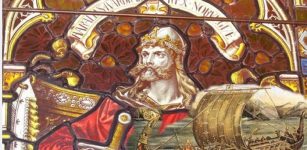 On This Day In History: The Battle Of Fulford – King Hardrada Against Saxon Troops – Was Fought – On Sep 20, 1066
News | Sep 20, 2016
On This Day In History: The Battle Of Fulford – King Hardrada Against Saxon Troops – Was Fought – On Sep 20, 1066
News | Sep 20, 2016 -
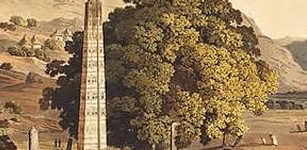 Ancient African Empires’ Impact On Migration Revealed By Genetics
Archaeology | Mar 31, 2023
Ancient African Empires’ Impact On Migration Revealed By Genetics
Archaeology | Mar 31, 2023 -
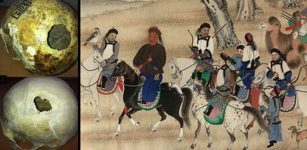 Siberia Had A Major Skull Surgery Center 2,500 Years Ago
Ancient History Facts | Jul 19, 2019
Siberia Had A Major Skull Surgery Center 2,500 Years Ago
Ancient History Facts | Jul 19, 2019 -
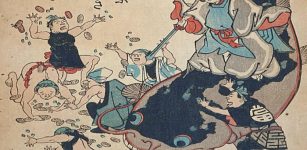 Odd Monster Namazu ‘Earth Shaker’ Was First Feared By People And Later Worshiped As Luminous Deity Repairing The World
Featured Stories | Feb 3, 2024
Odd Monster Namazu ‘Earth Shaker’ Was First Feared By People And Later Worshiped As Luminous Deity Repairing The World
Featured Stories | Feb 3, 2024 -
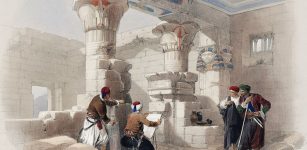 Egyptian Artisans In The Valley Of The Kings Had Permanent Jobs In The Time Of The Pharaohs
Featured Stories | Apr 11, 2022
Egyptian Artisans In The Valley Of The Kings Had Permanent Jobs In The Time Of The Pharaohs
Featured Stories | Apr 11, 2022 -
 Ancient Secrets Of The Masters Of Mu – Myths And Legends Examined – Part 1
Ancient Mysteries | Aug 24, 2018
Ancient Secrets Of The Masters Of Mu – Myths And Legends Examined – Part 1
Ancient Mysteries | Aug 24, 2018 -
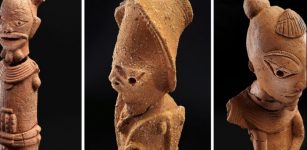 Honey-Collecting In Prehistoric West Africa From 3500 Years Ago – Pottery Examined
Archaeology | Apr 14, 2021
Honey-Collecting In Prehistoric West Africa From 3500 Years Ago – Pottery Examined
Archaeology | Apr 14, 2021 -
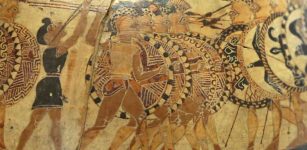 Why Didn’t The Spartans Build City Walls?
Civilizations | May 30, 2022
Why Didn’t The Spartans Build City Walls?
Civilizations | May 30, 2022 -
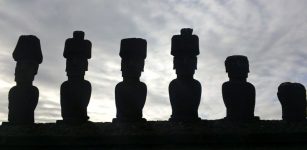 How Did The Early Rapa Nui People Put Huge Hats On Giant Statues Of Easter Island?
Ancient Technology | Jun 5, 2018
How Did The Early Rapa Nui People Put Huge Hats On Giant Statues Of Easter Island?
Ancient Technology | Jun 5, 2018 -
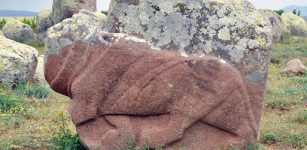 Mystery Of Gigantic Lion Sculptures Dated To The Hittite Era
Archaeology | Apr 14, 2016
Mystery Of Gigantic Lion Sculptures Dated To The Hittite Era
Archaeology | Apr 14, 2016 -
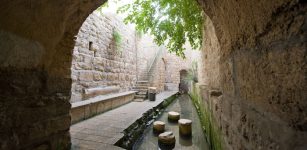 Biblical Pool Of Siloam In The City of David To Be Excavated And Opened To The Public
Archaeology | Jan 2, 2023
Biblical Pool Of Siloam In The City of David To Be Excavated And Opened To The Public
Archaeology | Jan 2, 2023 -
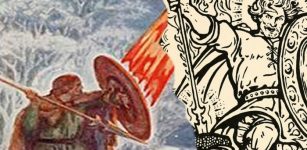 Fionn Mac Cumhail: Legendary Irish Hero, Clairvoyant And Leader Of Fianna Warriors
Celtic Mythology | Oct 11, 2019
Fionn Mac Cumhail: Legendary Irish Hero, Clairvoyant And Leader Of Fianna Warriors
Celtic Mythology | Oct 11, 2019 -
 Legend Of Evil Spearfinger And The Cherokee Who Were Guided By Celestial Beings
Featured Stories | Dec 9, 2025
Legend Of Evil Spearfinger And The Cherokee Who Were Guided By Celestial Beings
Featured Stories | Dec 9, 2025 -
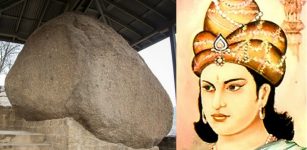 Mansehra Rock Edicts – Last Words Of Emperor Ashoka
Featured Stories | May 27, 2019
Mansehra Rock Edicts – Last Words Of Emperor Ashoka
Featured Stories | May 27, 2019 -
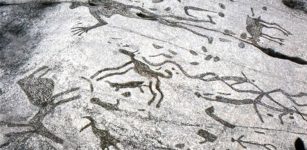 Peterborough Petroglyphs Could Offer Evidence Ancient Celts Visited Canada 2,000 Years Ago
Archaeology | May 27, 2015
Peterborough Petroglyphs Could Offer Evidence Ancient Celts Visited Canada 2,000 Years Ago
Archaeology | May 27, 2015 -
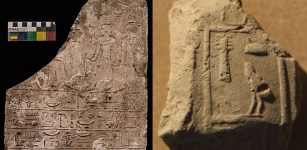 Important Discoveries Made In Upper Egypt’s Tel Edfu and Kom Ombo Sites
Archaeology | Jan 15, 2018
Important Discoveries Made In Upper Egypt’s Tel Edfu and Kom Ombo Sites
Archaeology | Jan 15, 2018 -
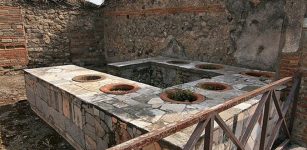 Thermopolium – Ancient Roman Restaurant Offered Fast Food But Was It A Good Idea To Eat There?
Ancient History Facts | Mar 16, 2018
Thermopolium – Ancient Roman Restaurant Offered Fast Food But Was It A Good Idea To Eat There?
Ancient History Facts | Mar 16, 2018 -
 Sole Survivor Recalls An Incredible Unexplained Mountain Mystery
Featured Stories | Aug 7, 2023
Sole Survivor Recalls An Incredible Unexplained Mountain Mystery
Featured Stories | Aug 7, 2023 -
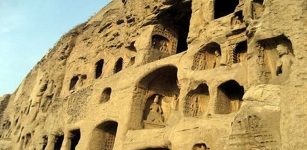 Yungang Grottoes: Marvellous Example Of Ancient Buddhist Rock-Cut Architecture
Featured Stories | Sep 15, 2015
Yungang Grottoes: Marvellous Example Of Ancient Buddhist Rock-Cut Architecture
Featured Stories | Sep 15, 2015

